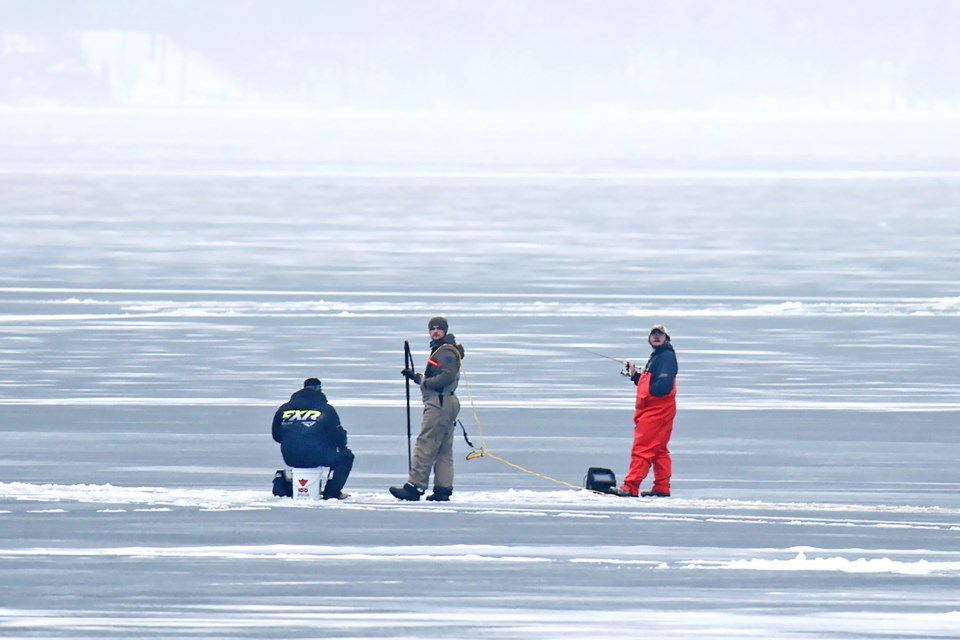Adventurous ice anglers are being warned not to push their luck on the Kempenfelt Bay ice in Barrie.
Thursday morning saw a few sportsmen venturing out onto the lake after the recent cold snap kicked lake freezing into high gear.
There were a few concerned people on shore, too, talking among themselves of the perceived risk the fishers were exposing themselves to.
"That's my son out there. He said there's four inches of ice," one man told BarrieToday.
But the father did not seem particularly convinced.
The physics of water ice is unique and not easy to predict when it comes to freezing, melting and its ability to hold weight in poor conditions.
Now that the cold spell has ended, with warmer temperatures and a large amount of rain, staying off the ice is bound to be a smart move, say Barrie Fire officials.
Barrie Fire and Emergency Services (BFES) says it has three calls so far this season — two of them coming this afternoon — from people who were concerned about others out on the lake.
Barrie Fire responded to a pair of calls Friday afternoon — at 4:30 and 6 p.m. — from residents on shore worried about people out on the ice.
Barrie firefighters responded and found the first person not in distress and they walked off, Deputy Fire Chief Carrie Clark told BarrieToday.
In the second call, she said no one was found.
"We performed a full grid search with the drone and had no signs or heat signatures of anyone," said the deputy chief.
A previous call was from a concerned citizen on shore who raised concerns about people on the ice because they were not moving around.
Barrie Fire responded and made contact with the ice anglers.
"If a person is considering going out onto an ice surface, they need to be aware of the water currents that happen under the ice, which makes it unstable or varying thickness," Clark said earlier on Friday.
"While no ice is safe ice, the hard layer should be at least a consistent four-inch thickness before a person can be on it," she added.
Barrie firefighters are trained for ice-water rescue and can use a rapid-deployment inflatable boat if the person is close to shore, or a hovercraft if they are farther from shore.
"Every platoon also has a drone operator who can deploy the BFES drone to pinpoint the person in distress, open communication channels with them and also direct the hovercraft to their location," Clark said. "This is very helpful in the dark."
As far as survivability rates, the length of time in the water depends on several factors, such as clothing, body size, percentage of the body in the water and, of course, the water temperature.
The symptoms of hypothermia can start within a few minutes and begin to restrict the abilities of a person to self-evacuate or signal for help.



